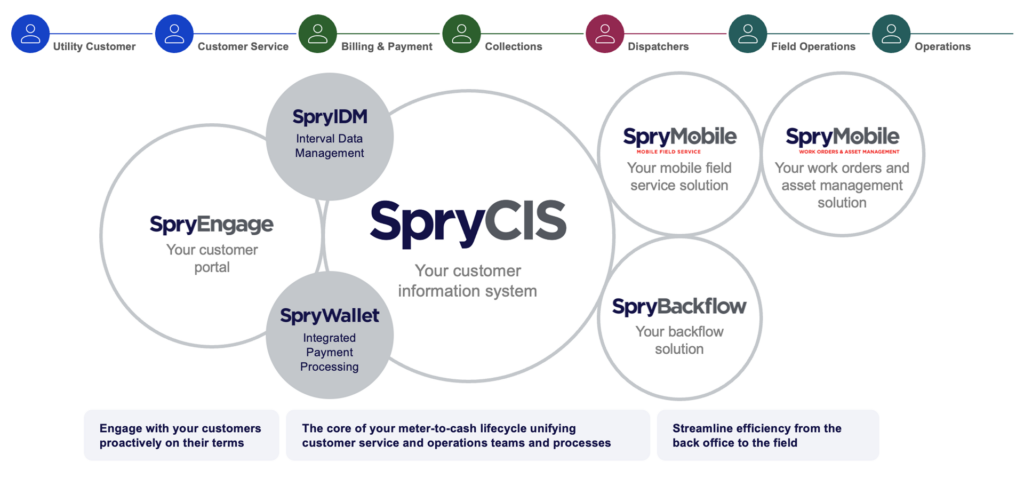Shifting customer expectations and increasing frustration with the customer experience are driving significant change in the utility industry.
Leading utilities across the Americas have made it their mission to put customer experience at the center of their business by investing in technology and streamlined processes that provide customers with:
- Self-service tools and options
- Immediate data and answers
- Flexible payment and billing options
- Omnichannel communications to interact on their terms.
Outdated systems, complex processes, and disconnected tools keep utilities from delivering on this mission.
What are the essential elements and systems required to meet modern customer expectations?

At SpryPoint, we’ve partnered with utilities across the Americas to embrace innovation, adopt modern tools, and streamline workflows through our process-centric design to meet their current and future customer experience requirements. Based on hundreds of conversations with utility leaders, these are the five must-have capabilities to put your customers at the center of your utility transformation.
1. Digital-first engagement and self-service tools
Your customers demand seamless digital interaction with their utility, similar to what they experience with leading consumer brands and services. That means providing a digital-first experience should be at the top of your customer experience feature list. Self-service portals and mobile capabilities are essential for customers to manage everyday tasks, such as accessing account information, making payments, reporting outages, tracking usage trends, and interacting with customer service representatives (CSRs) or chatbots for frequently asked questions. Providing these options will not only enhance the customer experience but also reduce your staffing costs for expensive call centers and office staff.
2. Personalized and proactive customer communications
Customers expect their utility to provide proactive notifications and alerts specific to their consumption trends, leaks, and service issues through multiple communication channels. You must empower your staff with real-time data, insight, and omnichannel communication tools at their fingertips to engage with your customers proactively and keep them informed about relevant utility information.
3. Real-time data access and analytics dashboards for customers to manage consumption trends
With the rise of smart meters and IoT devices, customers are increasingly seeking greater control over their utility consumption and usage status. Many utilities are transitioning to Advanced Metering Infrastructure (AMI) systems to collect real-time consumption data. However, to make the data actionable, you’ll need an interval data management solution to connect with AMI head-end systems and a self-service customer portal with analytics and insights that enable customers to track and manage their utility consumption.
4. Seamless omnichannel customer experience
Customers want a unified experience across multiple touchpoints—website, app, phone, social media, and in-person support. That means your core technology systems and processes must be seamlessly integrated to allow for real-time data transmission across customer communication channels, creating a cohesive, consistent, and relevant experience.
5. Flexible payment and billing options
Customers prefer to pay online, via mobile, at the point of sale (POS), or over the phone. These payments must update immediately in your core systems to prevent unnecessary service interruptions, which could lead to a negative customer experience. Modern utilities must provide customers with multiple payment options, including mobile wallets and autopay, improve convenience, and reduce late payments.
If you’re planning or in the midst of transforming your utilities, SpryPoint can help you navigate the requirements for putting customer experience at the center.
Download the SpryPoint platform overview to learn more, or let’s connect to discuss your specific needs.



